
These courses are also beneficial for individuals who are interested in starting a career in this sector. Students who successfully complete each course will receive a Certificate of Course Completion and Continuing Education Units (CEUs).


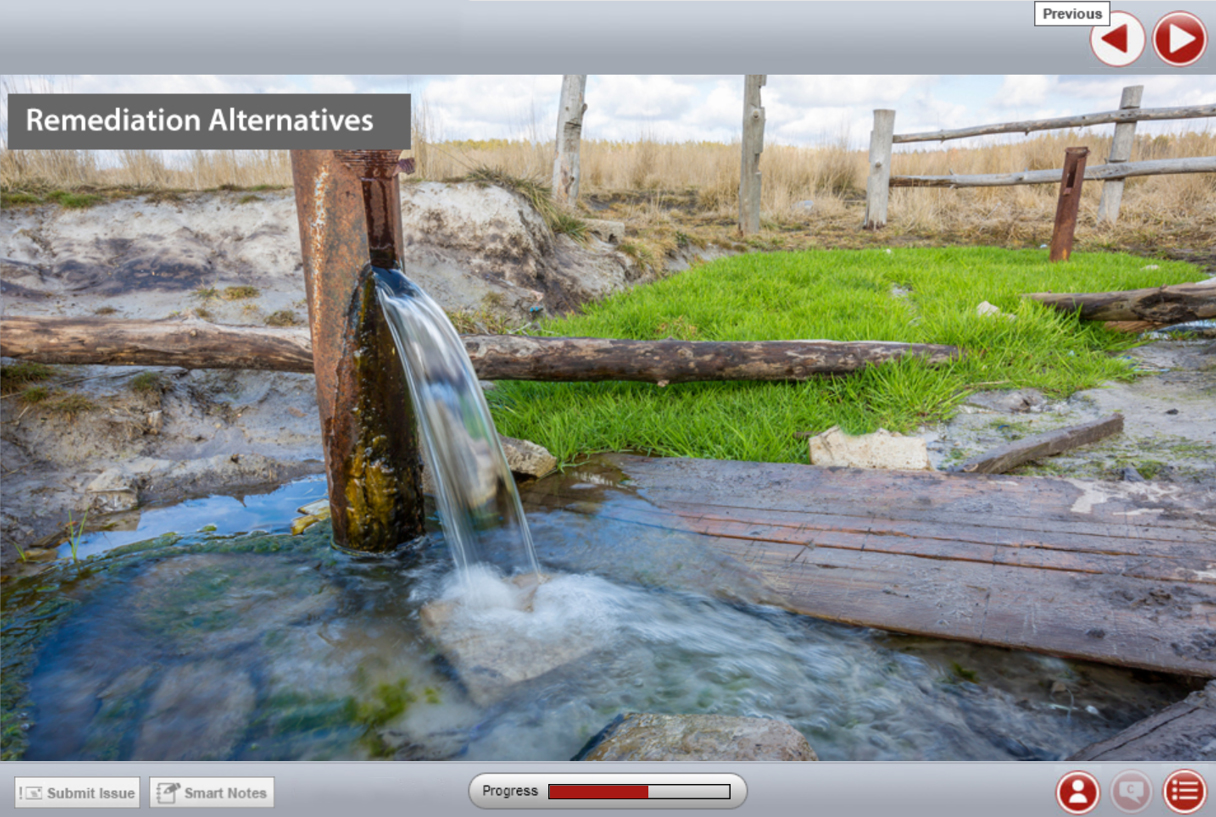
Duration: 1 Hour | Director Approved CEUs – 0.1
Approximately 40% of the world’s drinking water is drawn from wells, and in some locations, like in the Pacific Southwest, 80% of potable water is drawn from aquifers. Groundwater is an easily accessible resource, and this accessibility is also its biggest threat. Contaminants above ground and underground can easily seep into aquifers. There are a large variety of contamination sources, both natural and man-made. Similarly, there are a wide variety of remediation techniques to properly treat contaminated aquifers. Throughout this course, engineers, architects, planners and contractors will learn about the most common contamination sources and the industry best practices used for groundwater aquifer remediation.
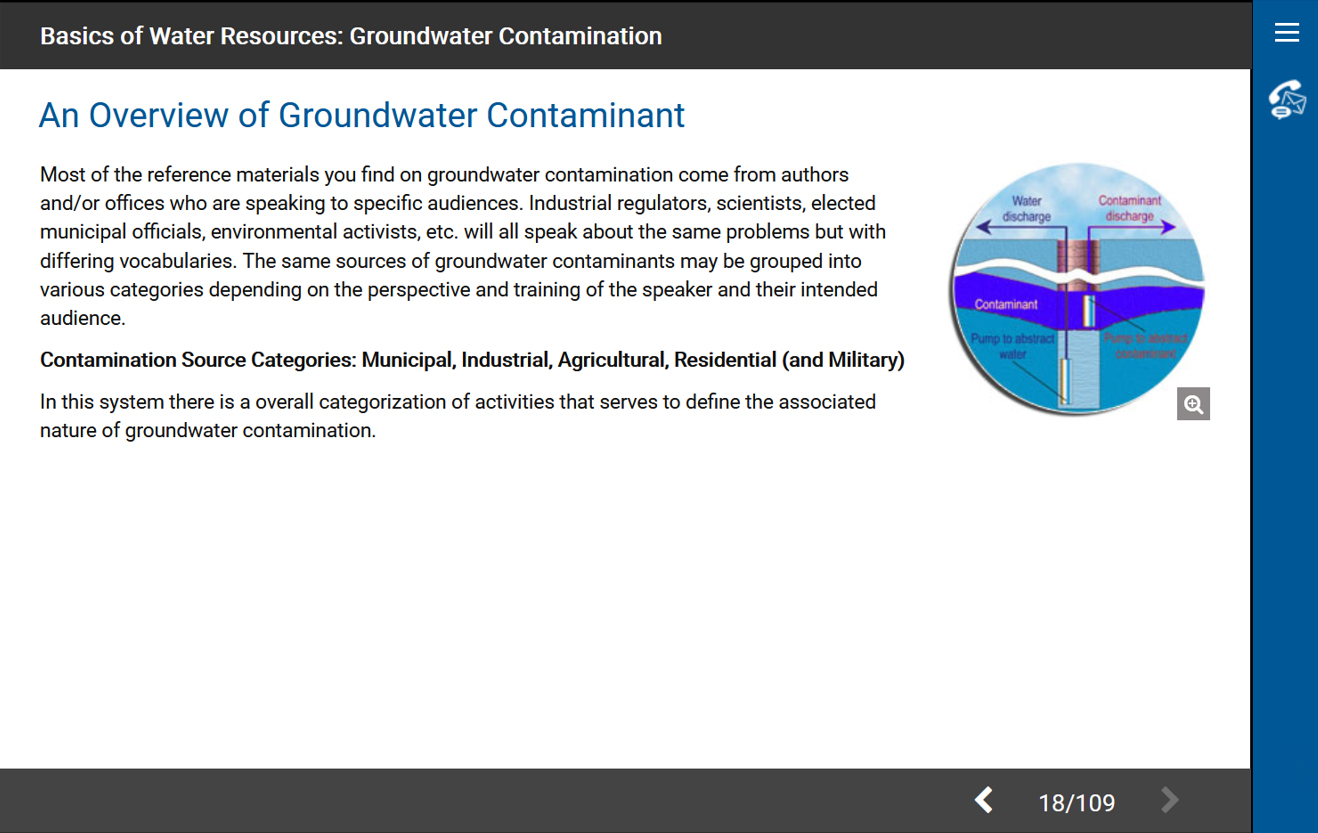
Duration: 2 Hours | Director Approved CEUs – 0.2
Groundwater hydrology is now critical to understand the mechanisms and rates of transport of physical, chemical and biological contamination below the ground, and the impact of those contaminants on the ground water supply.
This 2-hour interactive online course covers the fundamental sources and classifications of groundwater contamination. The course focuses on the discussion of natural and man-made sources of groundwater pollution and gives some perspective into various systems of categorization and classification.

Duration: 1 Hour | Director Approved CEUs – 0.1
This online course covers the fundamentals of water supply hydrology. From the hydrologic cycle to the nature and character of groundwater as it goes from recharge zones to discharge points, the basic concepts and terminology are introduced in a clear and easy to read form.
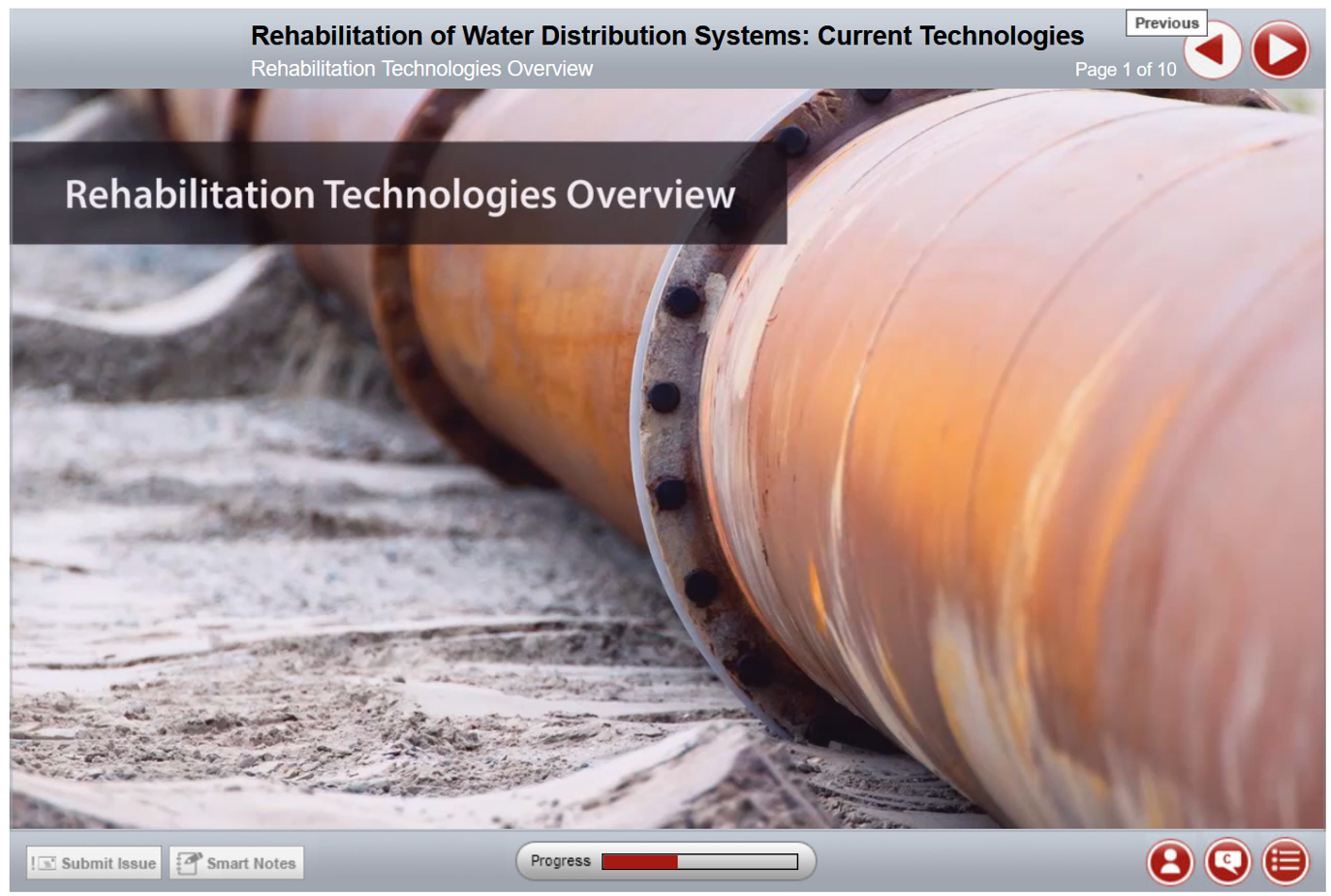
Duration: 1 Hour | Director Approved CEUs – 0.1
This interactive online course will go through the most current technologies to rehabilitate water distribution systems. At the end of this course Contractors, Engineers, Water System Operators and Architects will be able to identify technologies that are used to repair, rehabilitate and replace aging water distribution systems.
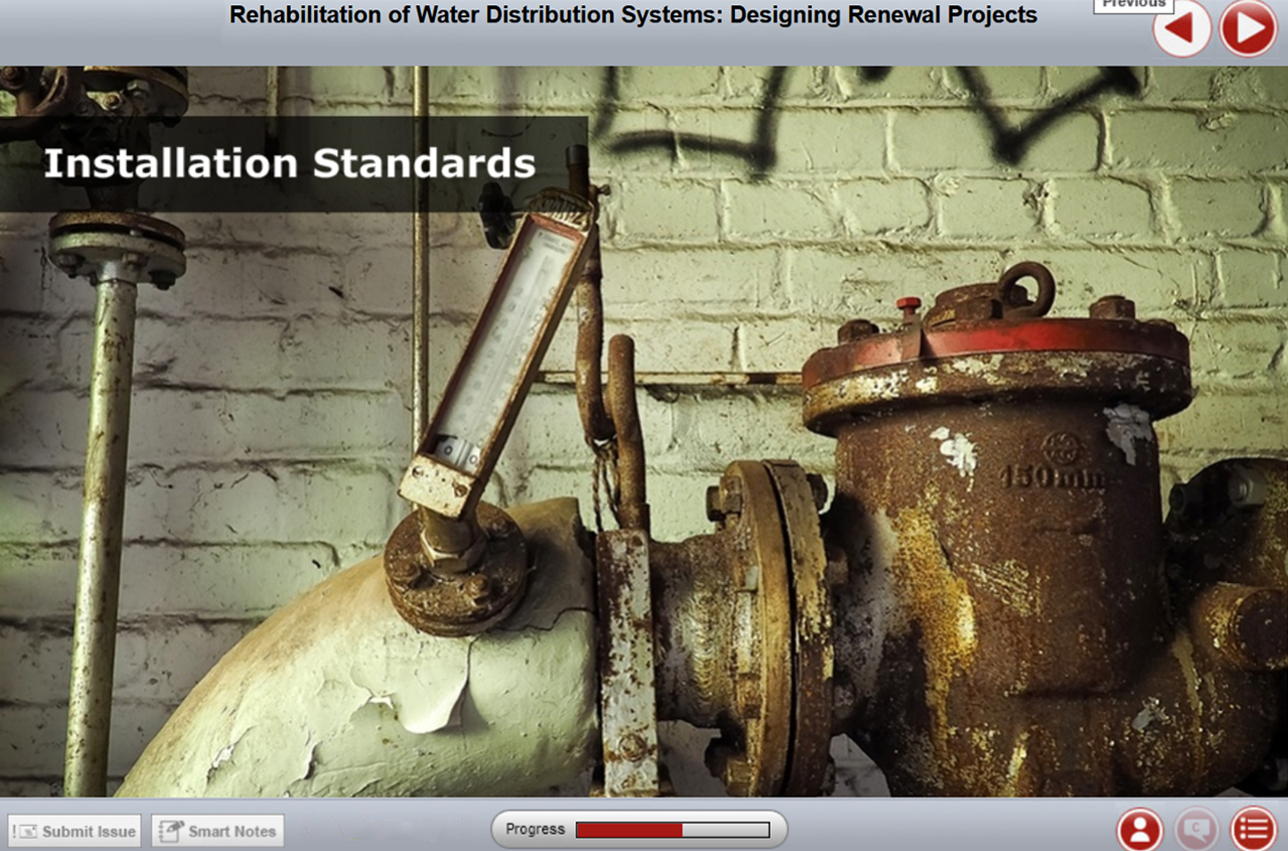
Duration: 1 Hour | Director Approved CEUs – 0.1
This interactive online course will go through some of the key technical guidelines and standards for designing rehabilitation projects within the US. Some of these guidelines include AWWA, ANSI, ASTM and ASME standards. At the end of this course Contractors, Engineers, Water System Operators and Architects will be able to determine applicable design and QA/QC guidelines for common water distribution rehabilitation methods.

Duration: 1 Hour | Director Approved CEUs – 0.1
This interactive online course will go through the overall items that need to be considered when selecting a method to rehabilitate a water distribution system. At the end of this course Contractors, Engineers, Water System Operators and Architects will be able to select applicable technologies to be used to repair, rehabilitate and replace aging water distribution systems.
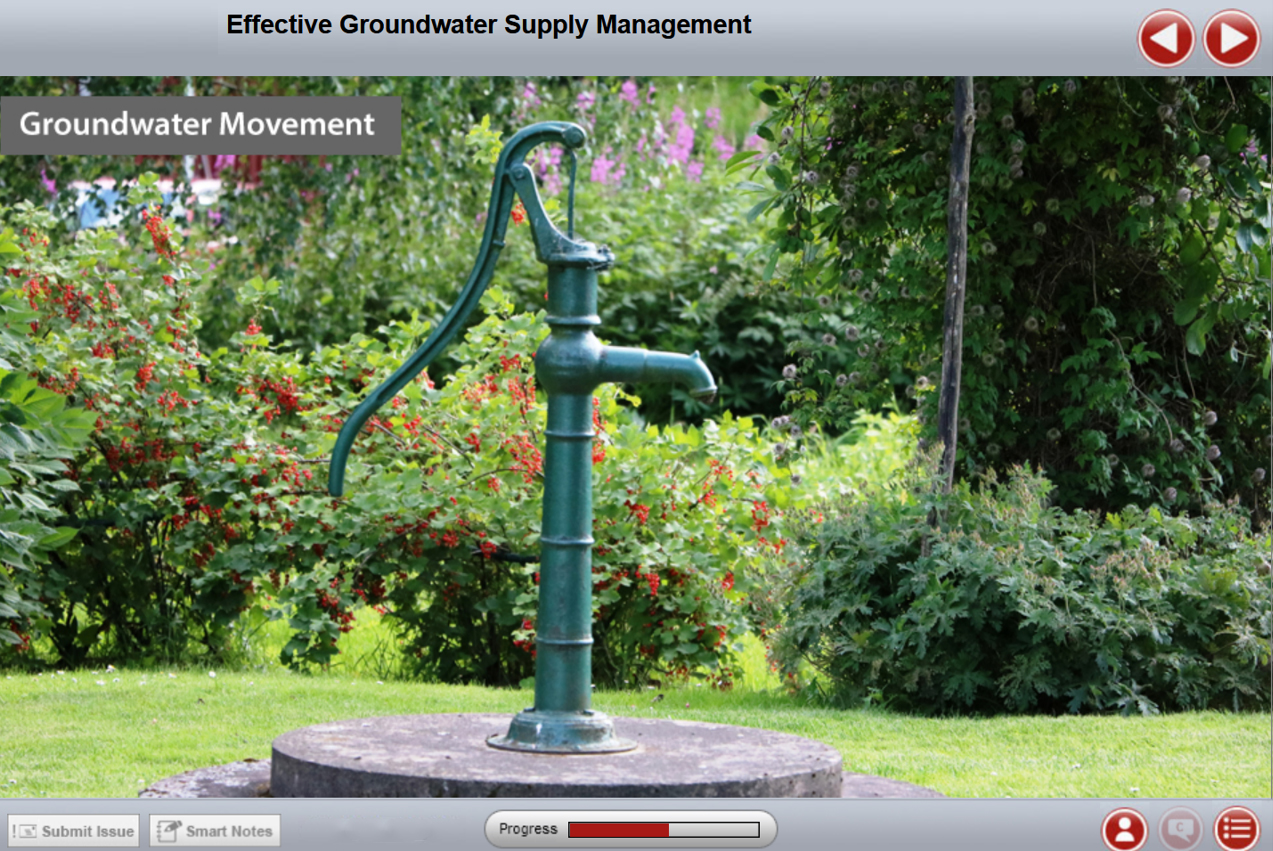
Duration: 1 Hour | Director Approved CEUs – 0.1
Effective Groundwater Supply Management is essential if groundwater resources are to remain viable for the foreseeable future. Groundwater Management is a rapidly evolving discipline that is incorporating ever more factors into the evaluation of principles that will ensure that no harmful effects arise from the utilization of this resource while ensuring that all potential resources that can be maintained are used to satisfy an ever-increasing demand. This interactive online course will present a history of Groundwater Management from its beginnings in the middle of the last century through the present day. Current parameters and environmental factors of concern will be outlined.
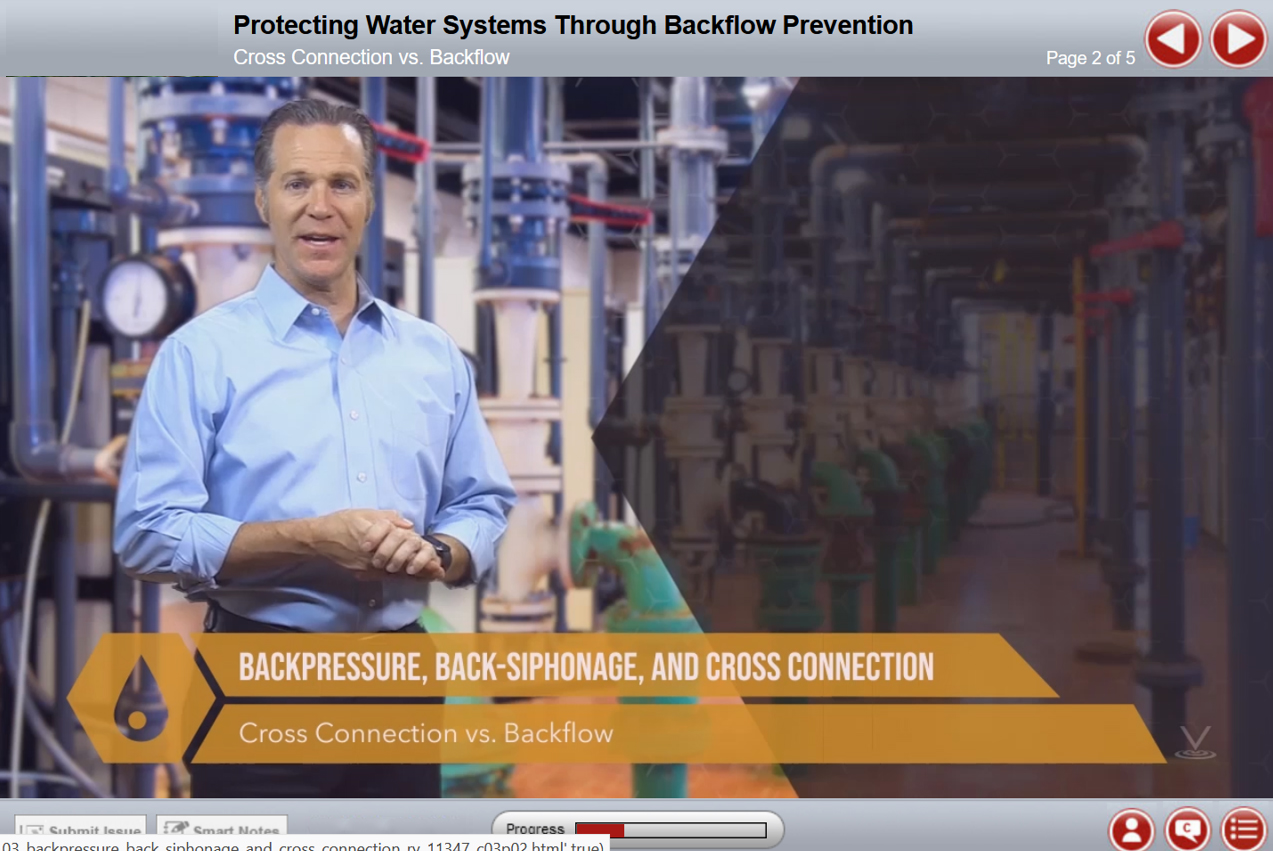
Duration: 1 Hour | Director Approved CEUs – 0.1
In this interactive, online course, we will discuss the difference between back pressure and back siphoning, and the conditions where each occur. We will learn how to select the appropriate backflow device given the potential hazard and describe how backflow devices operate.
Upon completing this course, you will be able to recognize examples of potential backflow situations and how to prevent back siphonage and/or backpressure. You will also be able to differentiate types of backflow preventers and the importance of regular testing and maintenance.
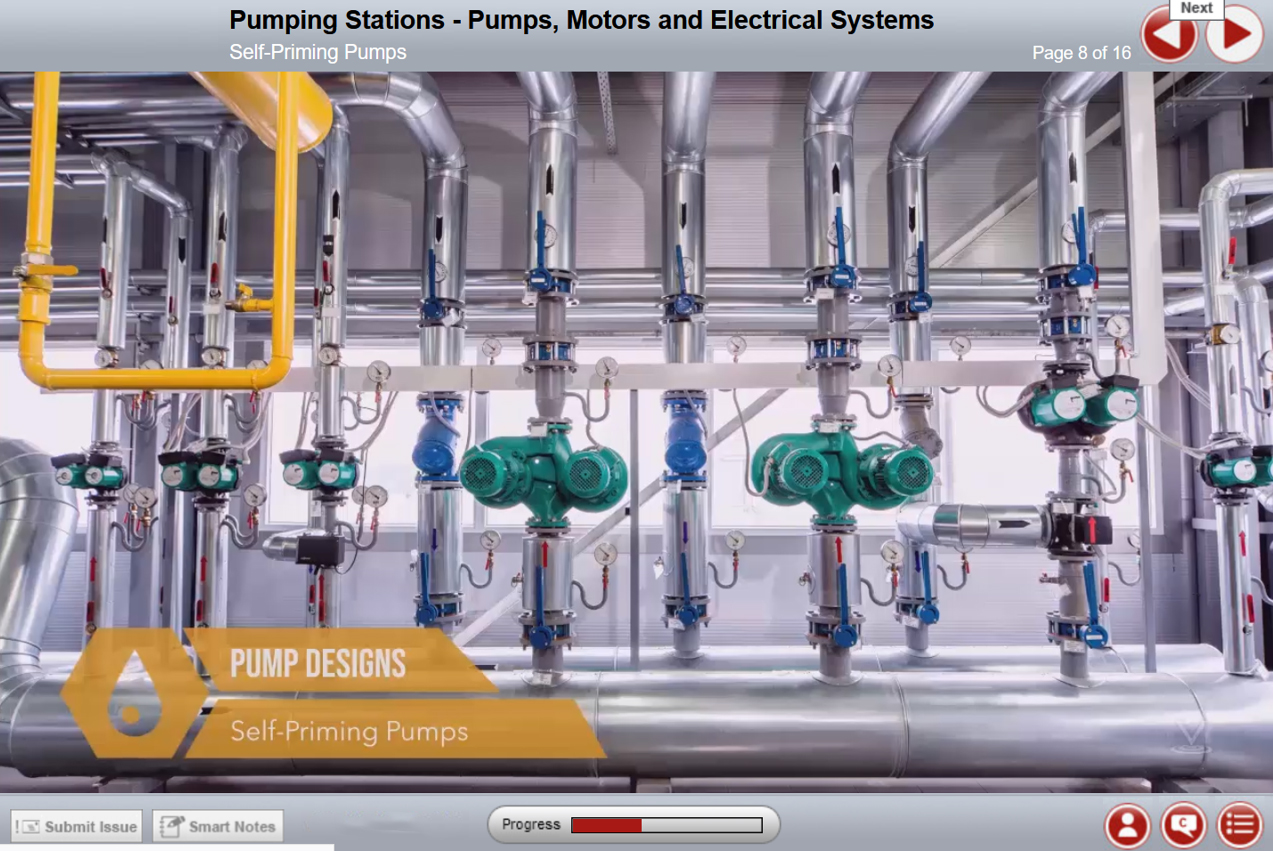
Duration: 2 Hours | Director Approved CEUs – 0.2
Pumping stations are necessary where large amounts of water must be transported through a piped distribution system. Knowing the characteristics of piping and valve materials will allow you to optimize the hydraulic design of your pumping stations.
This interactive online course will teach you about the different water distribution station pump classifications. You will also learn about pump designs and motor types. Additionally, you will learn about the electrical systems of pumping stations.
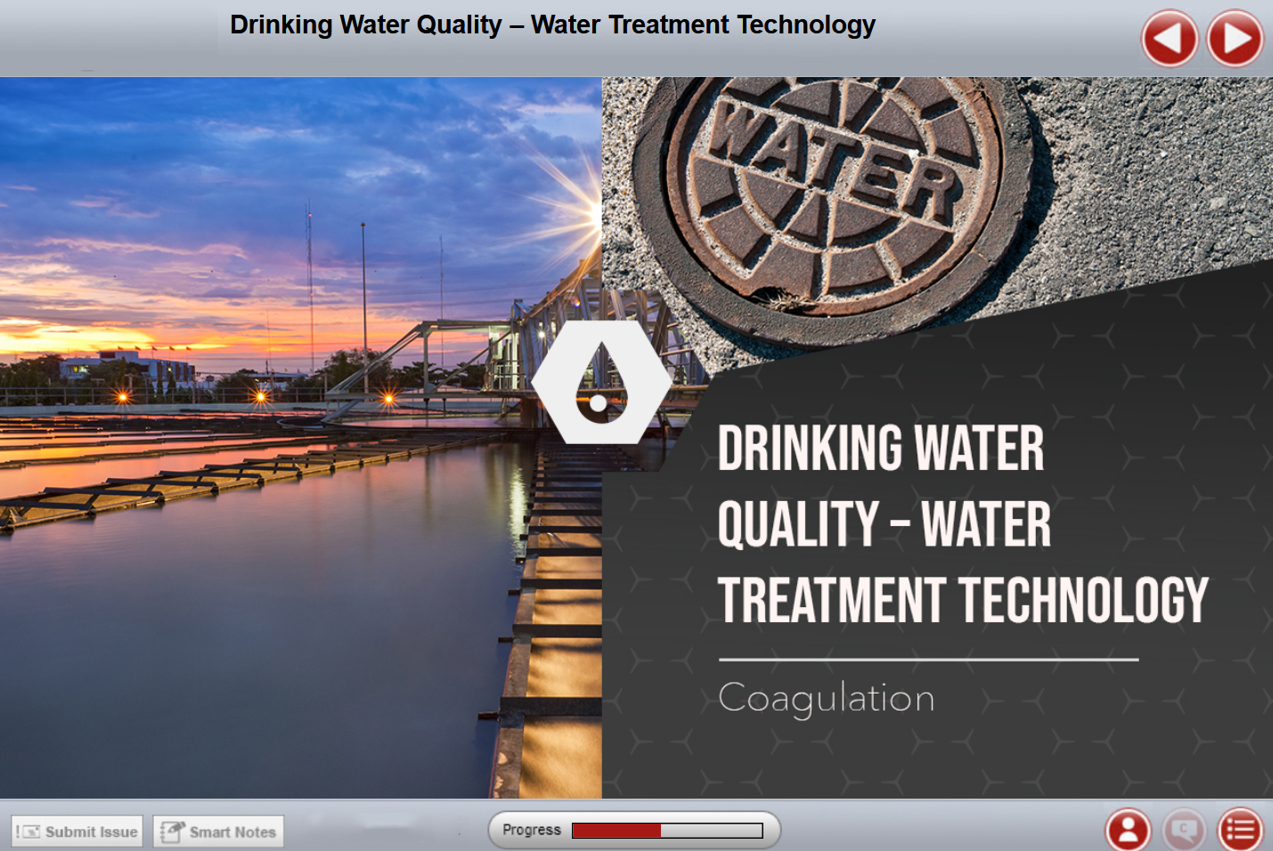
Duration: 1 Hour | Director Approved CEUs – 0.1
Safe drinking water supplies are crucial to the health, safety, and welfare of society. In this interactive, online course, we will discuss key information regarding water treatment technology of drinking water, including characteristics and capabilities of water treatment processes, source water quality, distribution system considerations, and residuals management. Technical personnel in the design, engineering, maintenance and operations areas of facilities will find this information critical to the successful operation of drinking water related facilities. This course addresses critical factors that affect health, safety and welfare of the population being served by the water treatment system.
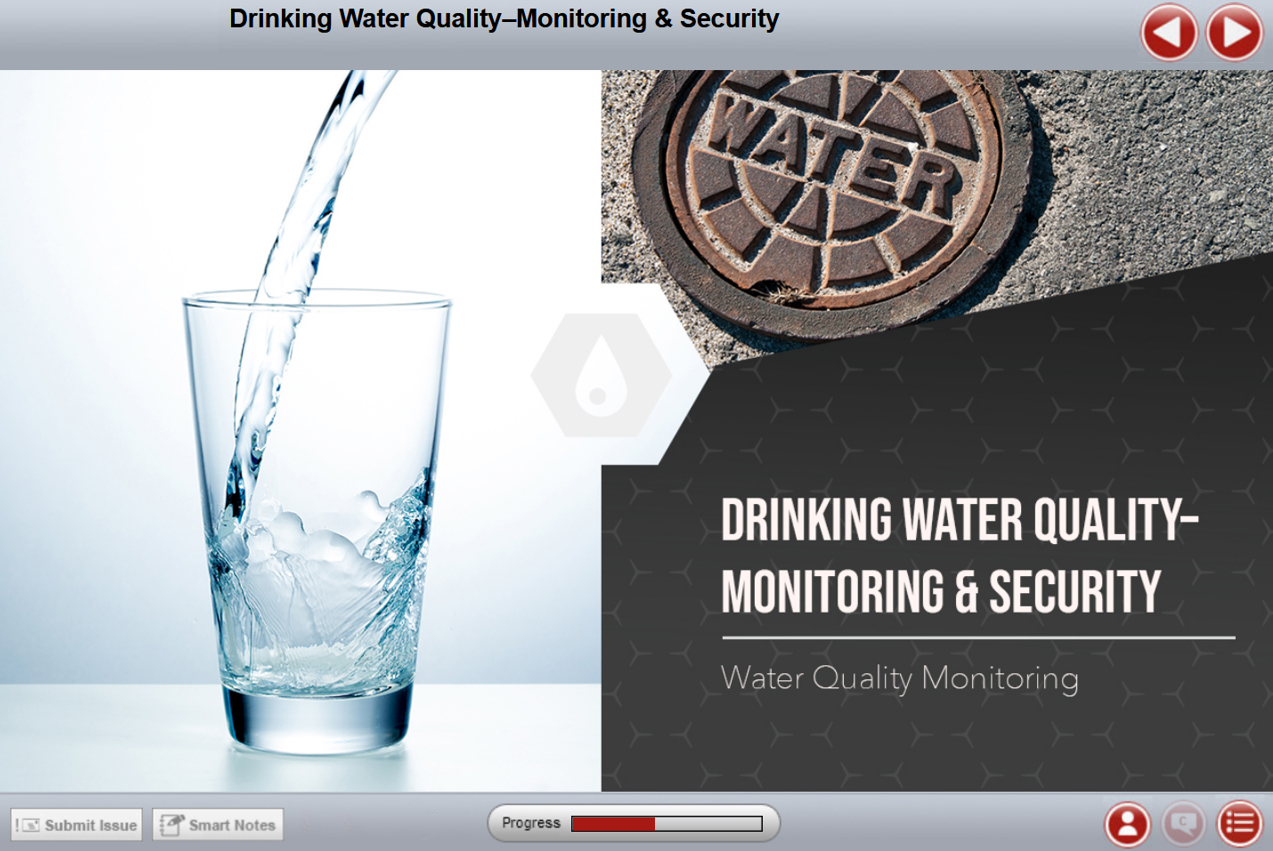
Duration: 1 Hour | Director Approved CEUs – 0.1
It’s understood that drinking water should be suitable for human consumption and for all usual domestic purposes. So, what is suitable drinking water? Ideally, drinking water should not contain any microorganisms known to be pathogenic or capable of causing diseases. It should be free from chemical contamination, and it should have the right physical properties.
In this interactive, online course, we will discuss key information regarding drinking water monitoring and security required to ensure the health, safety, and welfare of the general population being served by water supply facilities. We will discuss the minimum parameters recommended for monitoring drinking water, and the surveillance process and products used for monitoring water quality. We will also discuss the types of threats to facilities, and types of physical security elements that may be put into place to help protect these facilities.
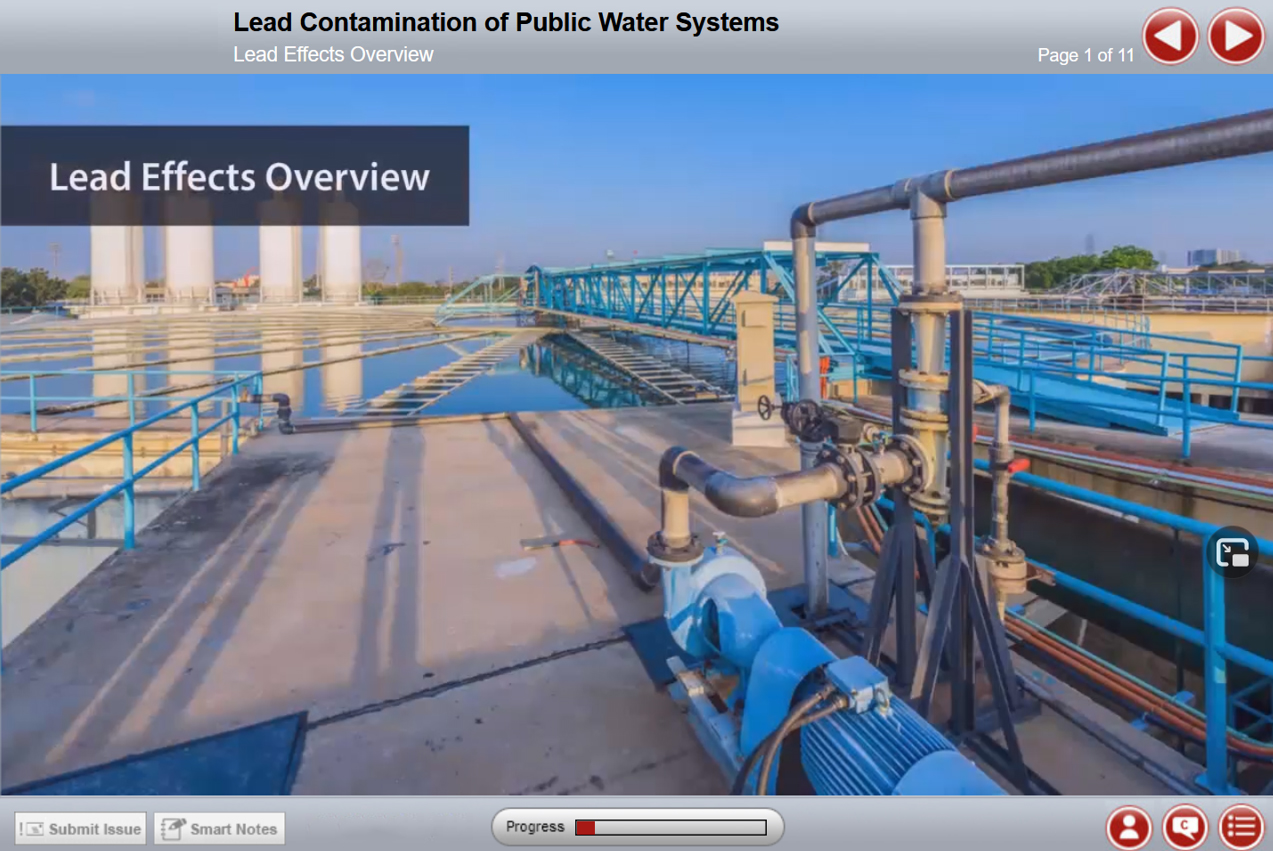
Duration: 1 Hour | Director Approved CEUs – 0.1
Treatment technologies can be utilized to significantly limit the migration of lead into the potable water supply. This interactive online course will describe these technologies and opportunities for implementation.
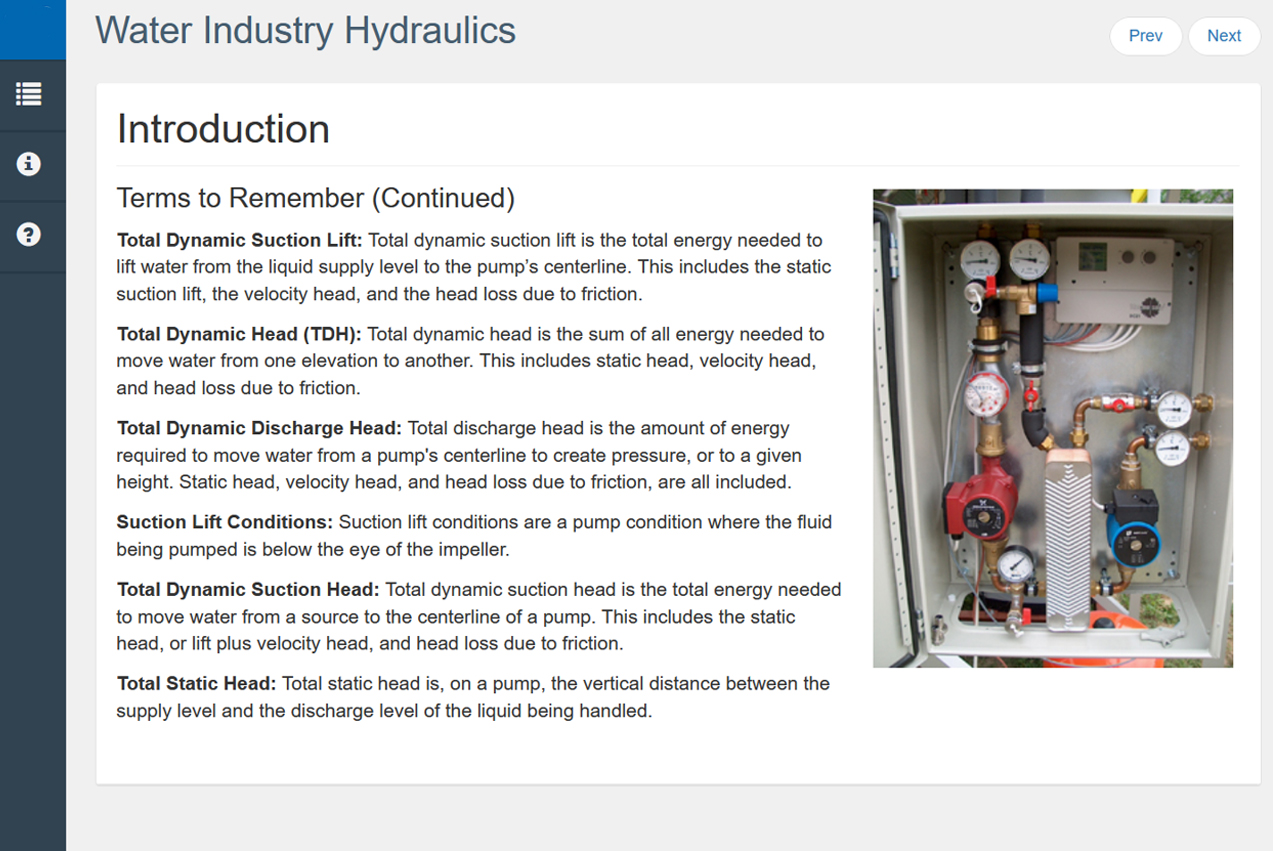
Duration: 1 Hour | Director Approved CEUs – 0.1
This interactive online course covers the concepts, calculations, and operational uses of hydraulics in the water industry, and will examine the physics behind certain operations and processes within the water treatment industry. Subjects included in the course are density and specific gravity, pressure and force, head, head loss, pumping rates and pump heads, flow rates, and flow measuring devices. This course will examine each of these concepts in detail and explain their application.
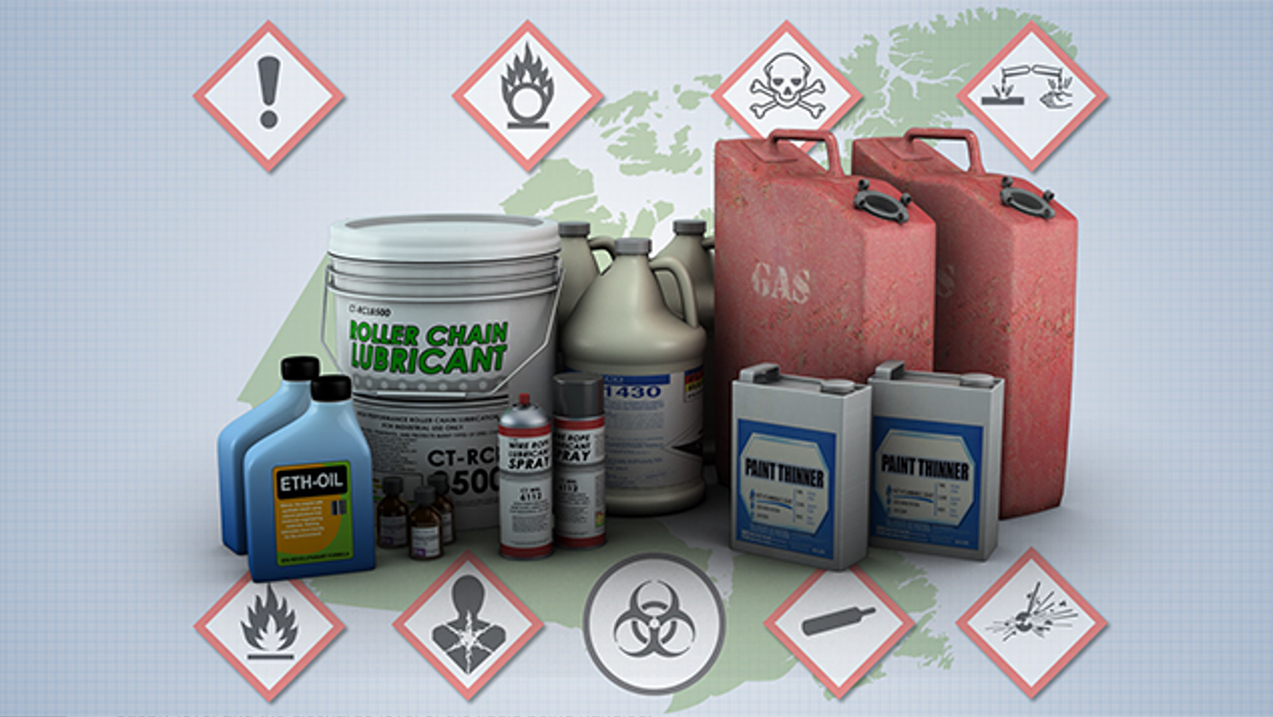
Duration: 1 Hour | Director Approved CEUs – 0.1
The Workplace Hazardous Material Information System (WHMIS) is a hazard communication system that ensures Canadian workers are provided with sufficient information to understand the hazards of the chemicals they may be exposed to in their workplace. WHMIS requires employers to communicate hazard information by labeling containers, providing safety data sheets, and training employees to recognize hazardous materials and how to protect themselves and their coworkers. This course provides an overview of WHMIS requirements.
Duration: 1 Hour | Director Approved CEUs – 0.1
The purpose of this course is to educate about Asbestos, what it is, where it is commonly found and dangers it can pose. Also covered is what to do if you come in contact with asbestos. This training course has 12 learning modules with a ten-question exam.
Duration: 1 Hour | Director Approved CEUs – 0.1
Blood and other potentially infectious materials pose a serious threat to employees who are exposed to these materials. Injuries from contaminated needles and other sharps have been associated with an increased risk of disease from more than 20 infectious agents. The primary agents of concern in current occupational settings are the human immunodeficiency virus (HIV), hepatitis B virus (HBV), and hepatitis C virus (HCV).
This course explains the requirements for complying with this standard as well as provides practical information on the various diseases and protection strategies associated with bloodborne pathogens. The course incorporates the 2001 OSHA revisions to the standard that were made in compliance with the Needlestick Safety and Prevention Act. This training course has 20 learning modules with a ten-question exam.
Duration: 1 Hour | Director Approved CEUs – 0.1
The primary goal of the water industry is the delivery of potable water reliably and at affordable prices. Coagulation, flocculation, and sedimentation are each processes which can be part of the water treatment process. Some plants use all three steps, some plants use fewer, and some higher technology plants use none. An understanding of these processes is necessary for anyone working in the water industry.
Duration: 1 Hour | Director Approved CEUs – 0.1
This course is designed to provide you with the basic information and safety rules to help you work safely with and around the chemicals that many organizations use in the water disinfection process. This course concentrates on Aqua Ammonia, Sodium Hypochlorite, and Calcium Hypochlorite.
Duration: 1 Hour | Director Approved CEUs – 0.1
Water distribution systems are an integral part of keeping the public healthy and safe. The primary purpose of a water distribution system is the delivery of potable water for drinking and firefighting. To meet that goal, systems are designed by civil engineers and city planners to meet the changing needs of homes, offices, and industries. The water operator plays a key role in the installation of these systems.
This course covers the methods of distribution to service customers, the installation of services as well as the maintenance of services. Also covered are the types of customers, metering of these customers and proper records to be kept for service customers.
Duration: 1 Hour | Director Approved CEUs – 0.1
Reading a meter is a basic skill every water operator should master. This course covers the proper way to obtain meter readings; including common types of meters, access to meters, how to obtain a direct readout from a meter, and alternative methods of obtaining meter reads.
Duration: 1 Hour | Director Approved CEUs – 0.1
Water quality varies from location to location, and the definition of potable water can vary with locality. Most water treatment facilities use filtration as an important step in their water treatment processes, and some smaller municipalities might use a slow sand filtration as their only treatment method.
This course will examine the treatment of water via filtration: what is filtered out of the water we drink, what are the different types of filters available, and how do those filtration methods work? We will also survey the regulatory requirements for potable water as set forth by the EPA, examine some of the most common pollutants, and look at a few case studies regarding specific filtration problems and the unusual solutions that have sometimes been reached.
Duration: 1 Hour | Director Approved CEUs – 0.1
Practical suggestions on how to implement the Hazard Communications Standard for the public sector, how to determine hazard classifications, how to interpret a Material Safety Data Sheet and procedures of Hazard Communications as presented in OSHA regulation 29 CFR 1910.1200 or 29CFR 1926.59. Contains three interactive scenarios, reference materials, case studies and hazardous communications forms.
Duration: 1 Hour | Director Approved CEUs – 0.1
This course covers what composes a hazardous material and presents the requirements for the general handling, storage and disposal of hazardous materials. It covers what a Safety Data Sheet (SDS) is and how to recognize the information contained in an SDS. It teaches you to recognize the special response procedures necessary to handle hazardous materials spills, covers personal protective equipment and why you’d use it. It also identifies the procedures for cleaning up a hazardous material spill. This training course has 7 learning modules with a ten-question exam.
Duration: 1 Hour | Director Approved CEUs – 0.1
Preventing spills, fires and explosions of hazardous materials during transportation is a major goal of the U.S. Department of Transportation (DOT). To protect the environment, the public and employees from such incidents, the DOT has developed and adopted rigorous standards for packaging and identifying hazardous materials that are shipped by any mode of transportation.
This module will briefly discuss general DOT classifications and requirements for packaging and shipping hazardous materials. The DOT standards must be followed if you ship hazardous chemicals or samples by any means of transportation. DOT standards must also be followed for any chemical, sample, or hazardous material you may take with you (or check in your baggage) on a flight by scheduled or chartered aircraft. This training course has 14 learning modules with a ten-question exam.
Duration: 1 Hour | Director Approved CEUs – 0.1
Noise-induced hearing loss is one of the most common occupational diseases and the second most self- reported occupational illness or injury. The extent of hearing damage depends on the loudness of noise to which you are subjected and the length of time you are exposed. Unprotected, continued exposure to loud noise, defined by OSHA as noise levels over 85 decibels (averaged over an 8-hour time period), can damage the hair cells of the inner ear and result in permanent hearing loss. At these noise levels, a company must have a Hearing Conservation Program.
This course outlines the requirements of a Hearing Conservation Program. This training course has 10 learning modules with a ten-question exam.
Duration: 1 Hour | Director Approved CEUs – 0.1
Thousands of incidents occur throughout North America every day. The failure of people, equipment, supplies or surroundings to behave or react as expected, causes most of the incidents. Incident investigations determine how and why these failures occur.
This course introduces techniques for investigating an incident and documenting the results of the investigation. This training course has 7 learning modules with a ten-question exam.
Duration: 1 Hour | Director Approved CEUs – 0.1
Recognizing the unique characteristics of the laboratory workplace, OSHA tailored a standard for occupational exposure to hazardous chemicals in laboratories. This course describes the requirements of the Occupational Exposure to Hazardous Chemicals in Laboratories, including the written chemical hygiene plan to ensure employees are protected from all potentially hazardous chemicals in use in their work areas. This training course has 14 learning modules with a ten-question exam.
Duration: 1 Hour | Director Approved CEUs – 0.1
For almost every job within any technical area of public service or general public works, there is a requirement for an understanding of basic mathematics and how to apply such concepts. Within the water industry there are necessary mathematics calculations that must be successfully mastered for the safety and health of the public who utilize domestic and industrial water systems.
This course covers beginning applied mathematics as used in the water supply industry. It is structured for beginning-level operators or those who have not had recent experience with mathematics in their jobs. Subjects covered in this course are: average daily flow, overflow rate, filter loading rate, detention time, and well operation calculations.
Duration: 1 Hour | Director Approved CEUs – 0.1
Water operators must master basic math skills to perform the more advanced calculations required day- to-day on the job.
This course covers basic mathematical notation, methods, and calculations. Included in the course are powers and scientific notation, dimensional analysis, rounding and estimation, solving for the unknown value, ratios and proportions, percent, averages, linear area and volume measurements, and conversions.
Duration: 1 Hour | Director Approved CEUs – 0.1
More employees are injured in industry while moving materials than while performing any other single function. In every day operations, workers handle, transport and, store materials. They may do so by hand, by manually operated materials handling equipment, or by power operated equipment.
This course highlights basic warehouse safety to prevent employee injury. This training course has 11 learning modules and a ten-question exam.
Duration: 1 Hour | Director Approved CEUs – 0.1
This course highlights the requirements in the standard for excavation and trenching operations, provides methods for protecting employees against cave-ins and describes safe work practices for employees. This training course has 8 learning modules with a ten-question exam.